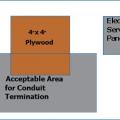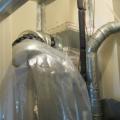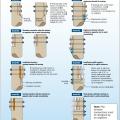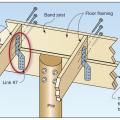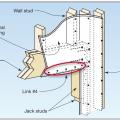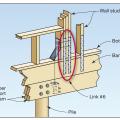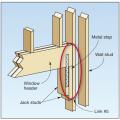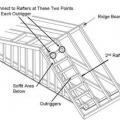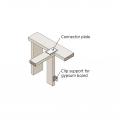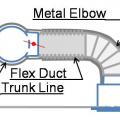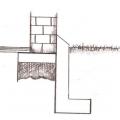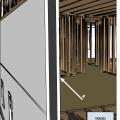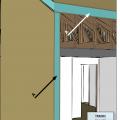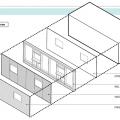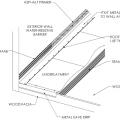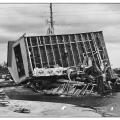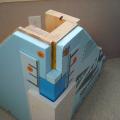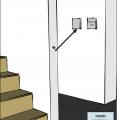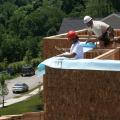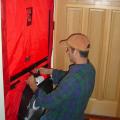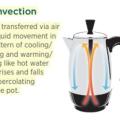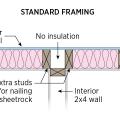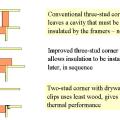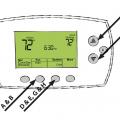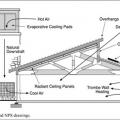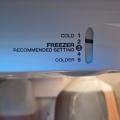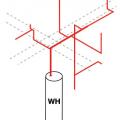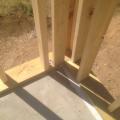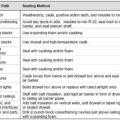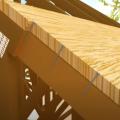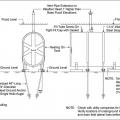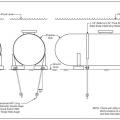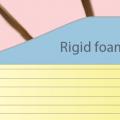Showing results 851 - 900 of 4973
Connect the plastic application tunnel from the injection equipment to the supply plenum.
Connecting hardware helps tie the roof to the walls to ensure a continuous load path to improve a building’s resistance to high winds, floods, and earthquakes.
Connecting hardware helps tie the walls to the top plates and rim joists to ensure a continuous load path to improve a building’s resistance to high winds, floods, and earthquakes.
Connection of floor framing to support beam for a coastal home built on piles (band joist nailing to the floor joist is adequate to resist uplift forces).
Consider using a metal duct elbow instead of flex duct at boot connections to prevent compressions
Construct a double wall consisting of two framed walls forming a wide wall cavity for more insulation in the home’s exterior walls.
Construct a vertical curtain wall of 29-gauge corrugated iron, concrete, or bricks that extends down 2 feet and out 8 to 12 inches to prevent rats from burrowing under crawlspace foundations
Construct exterior walls with insulated concrete forms (ICFs) that provide insulation without thermal bridging, as well as air sealing, a drainage plane, and high structural strength.
Construct exterior walls with structural insulated panels (SIPs) to provide an airtight wall with consistent insulation and very little thermal bridging.
Construction defects are exponentially cheaper to fix in the design stage rather than waiting to deal with them until after construction is complete (Source: American Contractors Insurance Group, Inc. 2009).
Continuous L-metal flashing integrated with underlayment at roof-wall intersections
Continuous load path failure due to improper connections between a home and its foundation allowed this building to be overturned in hurricane force winds.
Continuous load path failure due to improper connections between the roof decking and roof framing resulting from hurricane force winds.
Continuous rigid insulation coupled with thin (1/4-inch) spacer strips that provide drainage behind the wall cladding without increasing the fire risk of the assembly.
Continuously-operating ventilation & exhaust fans include readily accessible override controls
Contractors install gasket between the second-story top plate and the rim joist to air seal at this wall to attic transition (Source: S&A Homes).
Contractors will inspect the home and test HVAC equipment for safety concerns before air sealing begins.
Convection is heat transferred via air or liquid movement in a pattern of cooling/falling and warming/rising like hot water that rises and falls in a percolating coffee pot.
Conventional three-stud corner leaves a cavity that must be insulated by the framers—not good.
Conventional three-stud corners leave a cavity that must be insulated by the framers—not good
Cool air flow is produced when the cooling cycle is energized (set thermostat to “cool”)
Cool towers like this one at the Zion National Park Visitor Center can provide cooling to a building without any energy consumption
Cooling air temperatures that can be achieved by a direct evaporative cooler at various outdoor conditions
Cooling setting adjustments on a refrigerator allow the unit to be tuned to meet the target temperature for energy efficiency
Coordinate with other trades including framers, plumbers, and electricians to prevent needless looping of flex duct
Correct air sealing methods for common attic bypass air leakage paths.
Correct seismic retrofit hardware for securing the sill plate to foundation wall
Correctly anchoring an outside heating oil tank can prevent tank displacement if flooding occurs.
Correctly anchoring an outside propane tank can prevent tank displacement if flooding occurs.
